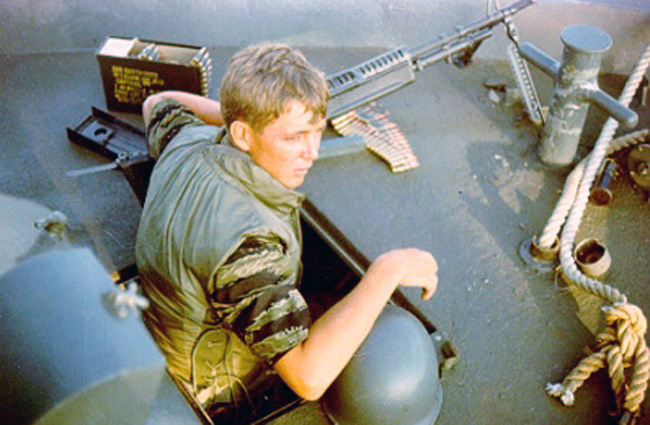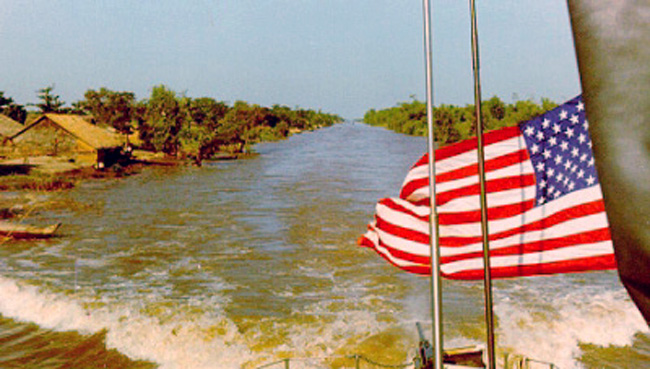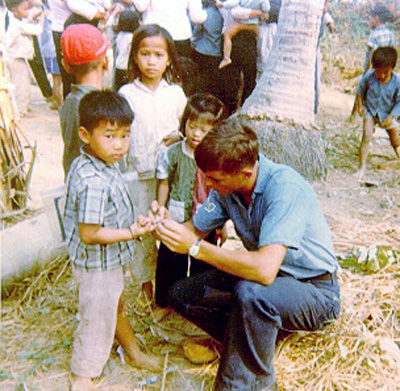Virtual Exhibits
Souvenirs of War
Introduction | Part 1 | Part 2 | Part 3 | Part 4 | Part 5 | Part 6 | Part 7

Photo: Craig Tiernan, 1968-1969. Ha Tien and Rach Soi Canal. Private collection, Craig
Tiernan.
Craig Tiernan served in the Navy for two tours -- as a Seaman Apprentice and Seaman from January 1968, to January 1969, positioned as a radarman on a mine sweeper, and as a Petty Officer 3rd Class from October, 1969, to September,1970, as a M16 machine gunner on DMZ (demilitarized zone) patrol. His first tour kept him in-country, patrolling small rivers and canals. The second tour brought him to Ha Tien along the Cambodian/Vietnam border.

Photo: Ha Tien--Rach Gia Canal, November 1968. Photograph by Craig Tiernan. Private collection, Craig Tiernan.
Tiernan took hundreds of photographs during his two years in Vietnam, not only to document what he saw but to send home to family so that they could get a feeling for what he was experiencing.
"I just wanted to chronicle what was going on, and wanting to send home to you mother, at the time, so she had a feeling for what was happening, and also I wanted to have those pictures for posterity as far as I was concerned, you know…It was just whatever happened, and more times than not, it was before the fact or after the fact, you’re certainly not going to be holding a camera while you’re getting shot at, you’re going to be holding a weapon. There was no real thought put into what was going on as far as taking pictures, I just always tried to have the camera with me, so that every patrol I went on I took pictures and I have, oh, hundreds and hundreds of pictures. Some of them are meaningful, some of them are just scenery…I really have a hard time remembering why I even took the picture, now when I look at it…" (Craig Tiernan, 1997)

Photo: Soldier with band-aids, 1968-1969. Private collection, Craig Tiernan.
Like many veterans, who, upon returning from the war, felt uncomfortable talking about their experiences, Craig wrapped his photos in rubber bands and stored them in a box in the basement. These photographs, however, are just as informative as professional and military photos from the same era. These images chronicle the experiences of a particular individual during the Vietnam War and serve as a valuable resource to anyone viewing them.
Introduction | Part 1 | Part 2 | Part 3 | Part 4 | Part 5 | Part 6 | Part 7

